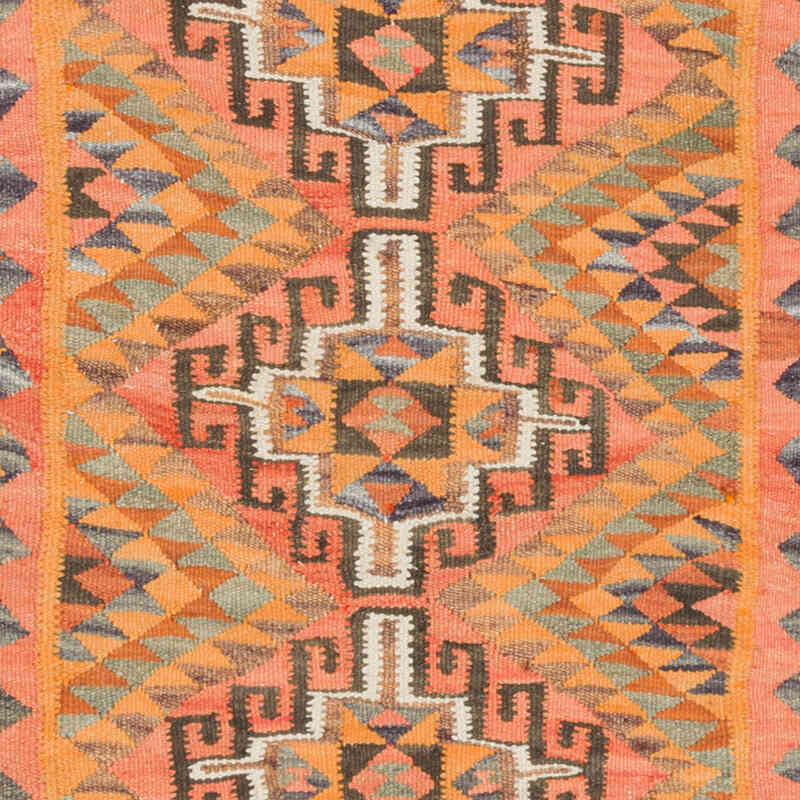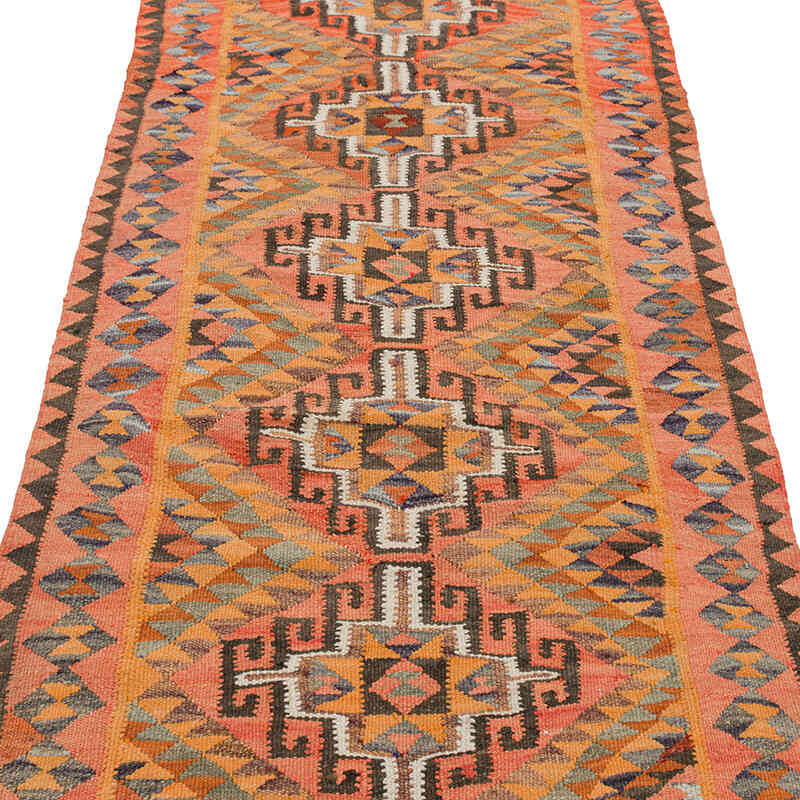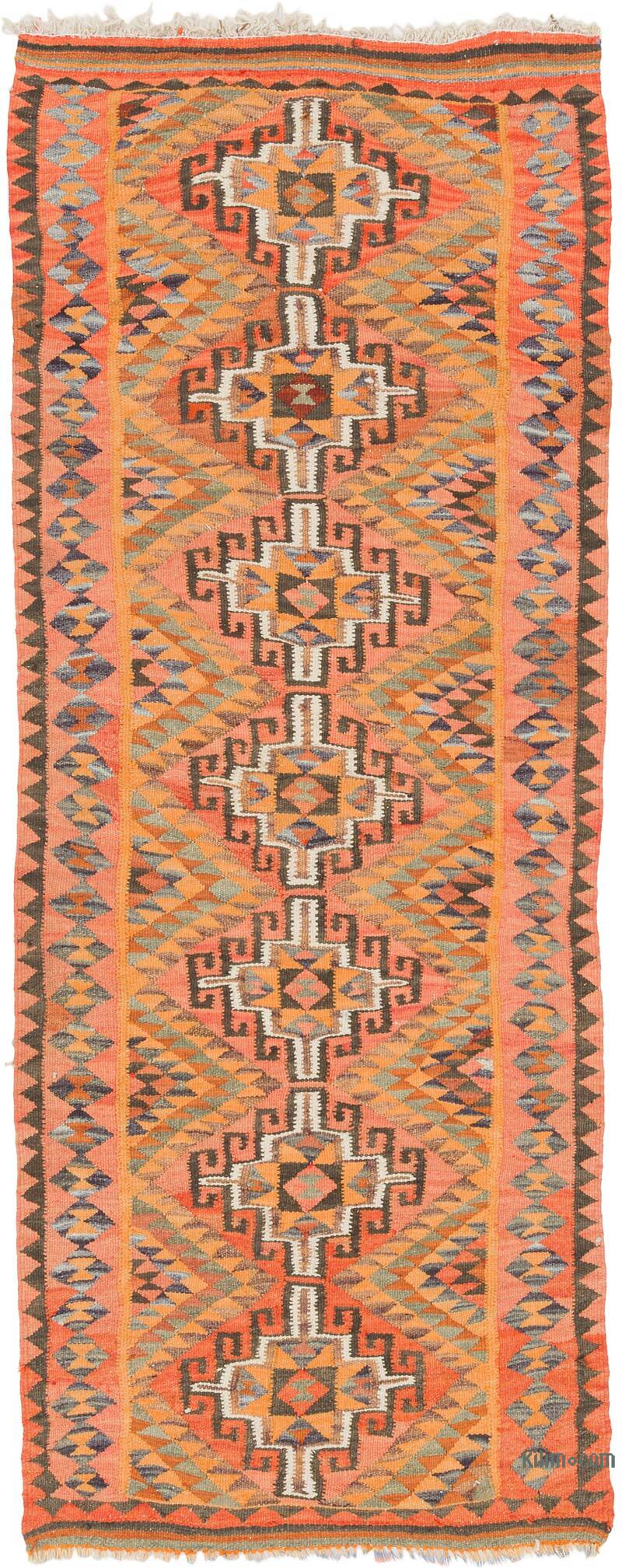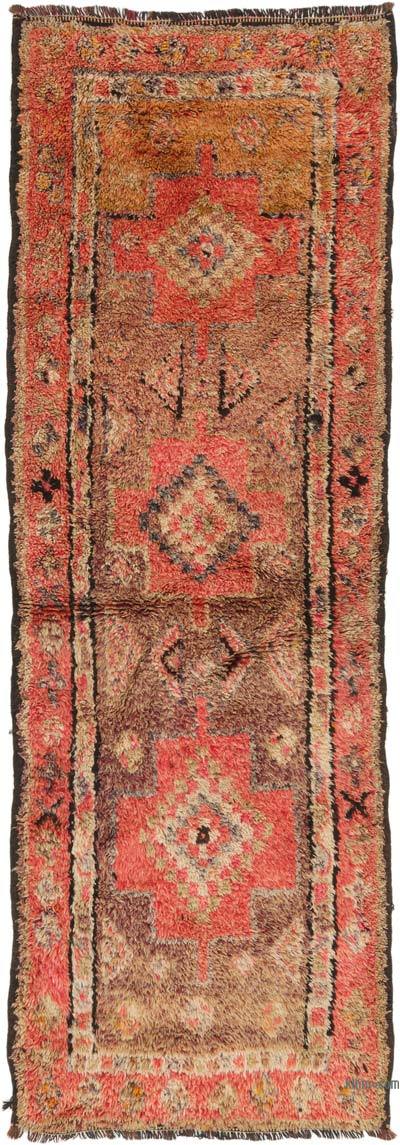Vintage Tribal Kilim Runner 3' x 7' 10" (36" x 94")
Type:
Kilim RugsCollection:
Tribal RunnersID:
K0077475Size:
Material:
The designs feature a rich array of symbols representing tribal culture and Anatolian motifs, often in the form of medallions, diamonds, and other geometric shapes.
The designs feature a rich array of symbols representing tribal culture and Anatolian motifs, often in the form of medallions, diamonds, and other geometric shapes. These kilim runners are ideal for hallways and narrow spaces, offering a touch of ethnic charm and artisanal quality to any interior.
Herki kilims not only serve as functional floor coverings but also as artistic expressions of tribal identity, making each rug a unique cultural artifact.
Design Elements
- Layout and Structure:
- The runner features a longitudinal design, typical for kilim rugs, making it ideal for hallways and narrow spaces.
- Symmetrical patterns are prevalent, enhancing the visual harmony and balance of the piece.
- Motifs:
- The primary motifs consist of geometric shapes, including diamonds, crosses, and zigzags, contributing to the tribal aesthetic.
- Repetition of patterns creates a rhythmic flow, reflecting traditional weaving techniques.
- Texture:
- Crafted from natural fibers, the texture has a flat weave typical of kilims, giving it a unique tactile quality.
- The surface exhibits a slightly coarse feel, adding to its vintage character.
Colors
- Palette:
- Warm hues dominate the palette, including earthy tones like terracotta and ochre.
- Subtle accents of gray and brown create visual contrast, enhancing the overall design.
- Symbolism of Colors:
- Warm colors symbolize passion, energy, and warmth, contributing to a cozy atmosphere.
- Cooler colors represent tranquility and balance within the design.
Meaning and Symbolism of Main Motifs
- Geometric Shapes:
- Diamonds and crosses often symbolize protection and fertility in various tribal cultures.
- Zigzag patterns represent water, an essential element for life and prosperity.
- Repetition:
- The repetition of motifs reinforces themes of continuity and stability in life.
- This design method is often used in tribal art to convey deeper cultural stories and ancestral connections.
Summary
This vintage tribal kilim runner showcases a harmonious blend of geometric design elements and warm, earthy colors. The symmetrical layout and textured craftsmanship reflect traditional weaving techniques. The primary motifs serve not only aesthetic purposes but also convey deeper cultural significance and stories from tribal heritage.
- Ships in 1-4 business days
- Only one in stock, handmade, unique
- Free shipping via FedEx Express. Easy returns
- Contact us or add a note to your order if you want us to delay your shipping.
- Request more info if you want this rug shorter or narrower
Colors may appear slightly different across various monitors due to screen settings device differences, and external lighting conditions. If color accuracy is important for your space, we recommend viewing the rug on multiple devices or contacting us for a detailed color description. We can provide detailed photos and references using Sherwin-Williams, Benjamin Moore, Pantone, or even Crayola crayons.
You can also visualize most of our products in your own room with AR (augmented reality) on an iPhone or iPad.
Return Policy
Need a rug pad? We recommend RugPadUSA






















Fast delivery on both of my orders